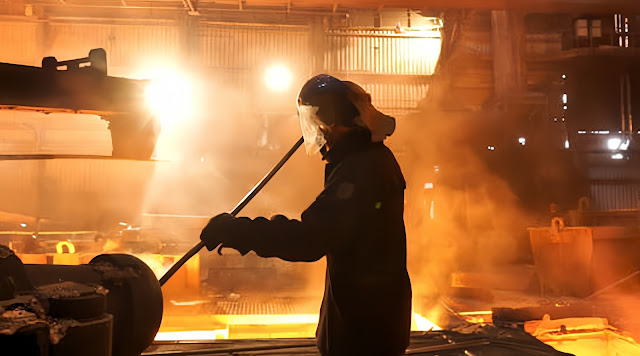What Is The Ironmaking Process?
The ironmaking process is a process in which metallic iron is extracted from iron-containing minerals (mainly iron oxides). It mainly includes blast furnace method, direct reduction method, smelting reduction method, and plasma method.
From a metallurgical perspective, ironmaking is the reverse behavior of iron rusting and gradual mineralization. Simply put, pure iron is reduced from iron-containing compounds. In actual production, pure iron does not exist, and what is obtained is an iron-carbon alloy.
Characteristics Of Ironmaking Process
The production process of reducing iron ore with reducing agent at high temperature to obtain pig iron.
The main raw materials for iron-making are iron ore, coke, limestone, and air. Iron ores include hematite (Fe2O3) and magnetite (Fe3O4).
The iron content of iron ore is called grade. Before smelting, it must be beneficiated to remove other impurities and improve the grade of the iron ore. Then it must be crushed, ground and sintered before it can be sent to the blast furnace for smelting.
The role of coke is to provide heat and produce the reducing agent carbon monoxide.
Limestone is used to make slag and remove gangue to separate the iron produced by smelting from impurities. The main equipment for ironmaking is the blast furnaces.
During smelting, iron ore, coke, and limestone are added from top to bottom from the feed port on the top of the furnace. At the same time, hot air is blown into the furnace from bottom to top from the air inlet. At high temperature, the reactants fully contact and react to obtain iron. .
Blast furnace ironmaking refers to loading iron ore, coke, carbon monoxide, hydrogen and other fuels and fluxes into a blast furnace for smelting. Impurities are removed to obtain metallic iron (pig iron).
Principles of Ironmaking Chemistry
Blast furnace production is continuous. A generation of blast furnace (from opening to overhaul and shutdown is a generation) can produce continuously for several to more than ten years.
During production, iron ore, coke, and flux are continuously loaded from the top of the furnace (generally the top is composed of a bell and a hopper, and modern blast furnaces are bell valve tops and bellless tops), and are blown from the tuyere at the lower part of the blast furnace. Input hot air (1000~1300 degrees Celsius) and inject fuel such as oil, coal or natural gas.
The iron ore loaded into the blast furnace is mainly a compound of iron and oxygen. At high temperatures, the coke neutralizes the carbon in the injection material and the carbon monoxide generated by the combustion of the carbon takes away the oxygen in the iron ore to obtain iron. This process is called reduction.
Iron ore produces pig iron through a reduction reaction, and molten iron is released from the taphole. The gangue in the iron ore, coke and ash in the injection material combine with fluxes such as limestone added into the furnace to form slag, which is discharged from the taphole and slag outlet respectively.
The gas is exported from the top of the furnace, and after dust removal, it is used as industrial gas. Modern blast furnaces can also take advantage of the high pressure on the top of the furnace and use part of the gas exported to generate electricity.
The above is part of the content about the ironmaking process, and we will continue to share it. If you have any knowledge or needs about EAF, SAF, LF, IF and other melting furnaces, please feel free to contact us at any time.
E-mail: saleswn@hanrm.com / inquiry66@hanmetallurgy.com (Daisy Zhai)
Tel / Whatsapp / Wechat: 0086 17791213533
Xi'an Hani Tech Co., Ltd.



Comments
Post a Comment